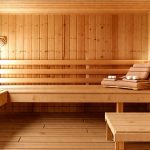The pursuit of wellness is as old as humanity itself, and increasingly, individuals are seeking ways to integrate holistic practices into their daily lives. Often overlooked in modern conversations about health are ancient traditions focused on detoxification and restoration – traditions that utilize heat, hydration, and mindful practice to support the body’s natural cleansing processes. Home-based saunas have experienced a surge in popularity as accessible tools for these methods, offering a convenient way to replicate the benefits of traditional sauna experiences. However, simply spending time in a hot room isn’t enough; understanding how to combine sauna use with specific hydration and post-sauna practices, particularly those aimed at supporting bladder health, is crucial for maximizing positive outcomes.
This article explores the intersection of home saunas and techniques designed to support what some refer to as “bladder detoxing” – a term that reflects efforts to enhance kidney and bladder function through increased circulation, hydration, and lymphatic drainage. It’s important to clarify upfront that “detoxing” is often misused; our bodies have inherent detoxification systems (liver, kidneys, skin, lungs) that are constantly working. The practices discussed here aren’t about forcing a detox, but rather about supporting these existing processes and creating an environment where they can function optimally. We will focus on safe, practical methods to complement sauna use with hydration strategies and gentle support for urinary health, always emphasizing the importance of listening to your body and consulting healthcare professionals before making significant changes to your wellness routine.
Home Sauna Basics & Considerations
Choosing a home sauna is the first step, and options abound – from traditional wood-fired saunas to infrared models. Infrared saunas are particularly popular due to their convenience and lower energy consumption; they heat the body directly rather than heating the air around you. Regardless of type, safety should be paramount. Ensure proper ventilation, a reliable power source (if applicable), and adherence to manufacturer’s instructions. Start with shorter sessions – 10-15 minutes – and gradually increase duration as your tolerance builds. Never use a sauna if you have certain medical conditions such as unstable angina, recent heart attack, or uncontrolled hypertension without first consulting your doctor.
Hydration is absolutely critical when using a sauna. The intense heat causes significant fluid loss through sweat, and dehydration can negate any potential benefits and even be dangerous. Pre-sauna hydration – drinking 16-24 ounces of water before entering the sauna – is essential. Continue to hydrate during and after your session as well. Electrolyte replenishment can also be beneficial, particularly if you’re sweating profusely; options include coconut water or electrolyte powders. Beyond hydration, consider the environment: avoid alcohol or heavy meals before a sauna session, and listen carefully to your body’s signals. If you feel dizzy, nauseous, or unwell at any point, immediately exit the sauna.
The benefits attributed to regular sauna use are varied and often anecdotal, but include improved cardiovascular health, muscle recovery, stress reduction, and potentially enhanced immune function. However, these are not guaranteed outcomes, and individual experiences will differ. The key is consistency, mindful practice, and a holistic approach that integrates sauna sessions with other healthy lifestyle choices. Remember that the goal isn’t just about enduring heat; it’s about creating an experience that supports overall wellbeing.
Supporting Bladder & Kidney Function
The idea of “bladder detoxing” often revolves around supporting the kidneys’ natural filtering processes and promoting efficient bladder emptying. This is not about aggressive cleansing but rather gentle encouragement of these vital functions. Hydration, as previously discussed, forms the cornerstone of this support. Beyond simply drinking water, focusing on how you hydrate can make a difference. Sipping water throughout the day, rather than gulping large amounts at once, allows for better absorption and reduces strain on the kidneys. Herbal teas – dandelion leaf tea or parsley tea, both traditionally used to support kidney function – can be incorporated (again, check with your doctor if you have any underlying health conditions). To learn more about incorporating hydration into your daily routine, explore these morning hydration techniques.
Lymphatic drainage plays a crucial role in eliminating waste products from the body. Gentle movement after a sauna session helps stimulate lymphatic flow. This could be as simple as a leisurely walk or some light stretching. Avoid strenuous exercise immediately following a sauna, as this can put undue stress on your system. Furthermore, practices like dry brushing – using a soft-bristled brush to gently massage the skin in circular motions before entering the sauna – are believed to stimulate lymphatic circulation and aid detoxification.
It’s important to understand that urinary tract infections (UTIs) and bladder problems should be addressed by a medical professional. The techniques discussed here are not intended as treatment for any medical condition, but rather as supportive measures to complement overall health and wellbeing. If you experience symptoms of a UTI – burning sensation during urination, frequent urge to urinate, cloudy or bloody urine – seek immediate medical attention. Understanding the connection between hydration and bladder function can also help prevent issues; consider exploring the impact of dehydration on these systems.
Gentle Hydration Strategies
- Consistent Sipping: Aim for small, frequent sips of water throughout the day. Carry a reusable water bottle as a visual reminder.
- Herbal Tea Integration: Incorporate kidney-supportive herbal teas (dandelion, parsley) into your routine, but be mindful of any contraindications or interactions with medications.
- Electrolyte Balance: Replenish electrolytes lost through sweating, especially after sauna sessions, with natural sources like coconut water or electrolyte powders.
Beyond simply drinking enough water, the quality of your hydration matters. Filtered water is often preferred to remove potential contaminants. Avoid excessive sugary drinks and caffeine, which can dehydrate you and put extra strain on your kidneys. Consider adding a slice of lemon to your water – while not definitively proven as a detoxifier, it encourages increased fluid intake and provides vitamin C. The key takeaway here is to make hydration an intentional practice, integrated seamlessly into your daily routine. It’s about building habits that support long-term kidney and bladder health.
Post-Sauna Cooling & Rehydration Protocol
- Cool Down Gradually: Avoid immediately jumping into a cold shower after a sauna session. Instead, allow your body to cool down gradually with tepid water or simply air drying. This prevents shock and allows the cardiovascular system to adjust smoothly.
- Rehydrate Immediately: Drink 16-24 ounces of water (or an electrolyte solution) immediately following your sauna session. Continue sipping fluids over the next hour.
- Gentle Movement & Lymphatic Support: Engage in light movement – a short walk, stretching, or yoga – to stimulate lymphatic drainage and aid waste removal.
This cooling phase is crucial for allowing the body to transition back to its normal state. The rapid temperature change from extreme heat to cold can be stressful on the system, so gradual cooling is preferred. Rehydrating immediately replenishes fluids lost during sweating and supports kidney function. Gentle movement further enhances lymphatic circulation, helping to eliminate waste products more efficiently. This post-sauna protocol isn’t just about physical recovery; it’s about optimizing the benefits of your sauna experience and supporting overall wellbeing.
Listening To Your Body & Seeking Professional Guidance
- Pay Attention to Signals: Be acutely aware of how your body responds to sauna use and hydration strategies. Stop immediately if you experience any adverse effects.
- Individualize Your Approach: There is no one-size-fits-all approach to wellness. Experiment with different techniques and find what works best for you.
- Consult Healthcare Professionals: Before making significant changes to your routine, especially if you have underlying health conditions, consult with a doctor or qualified healthcare practitioner.
The most important aspect of any wellness practice is listening to your body’s cues. If you feel uncomfortable or unwell at any point, stop and reassess. Never push yourself beyond your limits. This isn’t about achieving perfection; it’s about finding sustainable practices that support your individual needs and promote overall health. Remember that the information presented here is for general knowledge and informational purposes only, and does not constitute medical advice. Seeking professional guidance ensures you’re approaching these techniques safely and effectively. For a more holistic approach to bladder health, consider exploring improving bladder health through diet and habits.





















